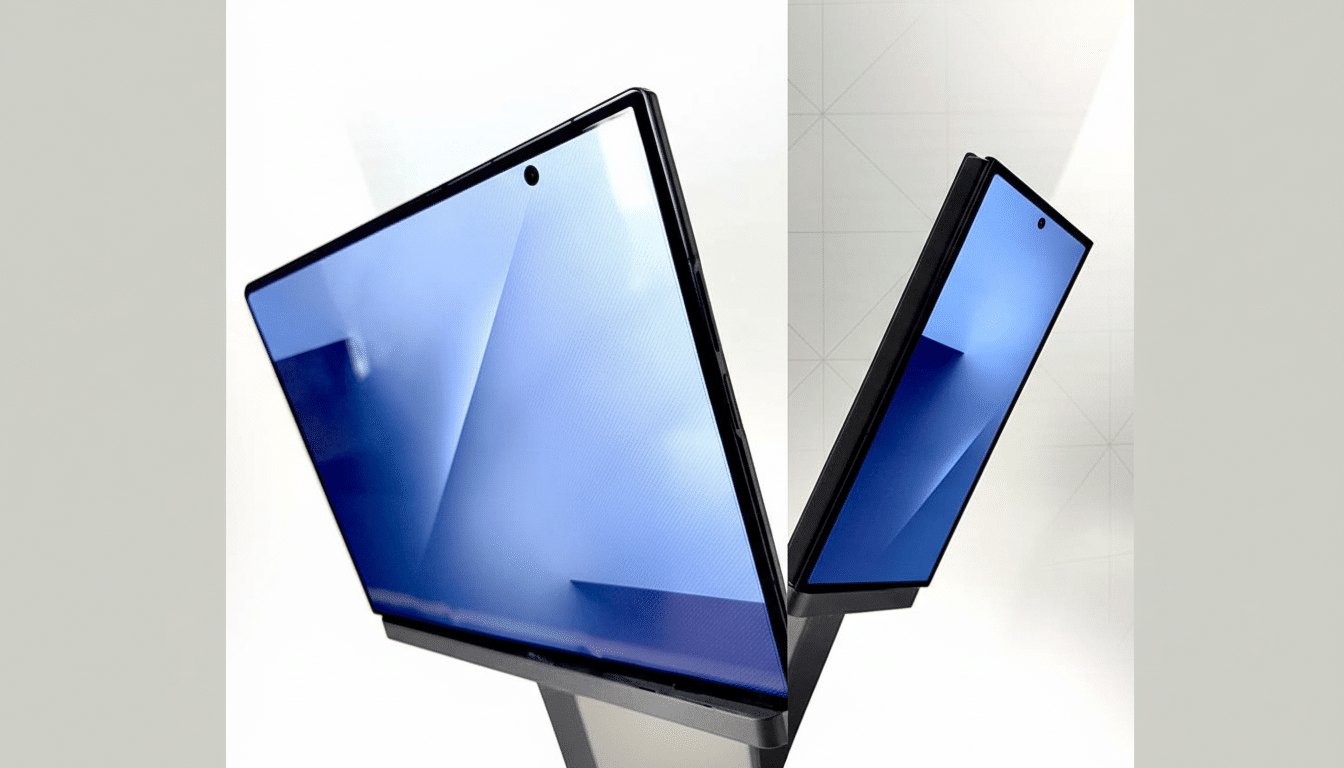Samsung’s long-rumored trifold now has the most obvious name in tech: Galaxy Z TriFold. The name rolled out from a reputable leak and it slides perfectly into Samsung’s existing Fold lineup, but signifies what is effectively an all-new form factor designed to transform the phone into a small compact tablet without having the device’s bulk of two—often cumbersome and least pocket-friendly—separate doohickeys.
A Familiar Brand, An Unfamiliar Shape Emerges
That’s all there is to go on so far, but a set of detailed specifications accompany the leaked name, which comes from one of the most reliable mobile tipsters, Evan Blass. Keeping Samsung’s foldables under a single flagship name makes sense with the “Galaxy Z” umbrella, and “TriFold” is exactly what it sounds like—no cryptic codenames here, just a straightforward statement of purpose.

Leaked Specs Suggest An Ambitious Design
The rumored hardware, meanwhile, creates a sense of a device specifically built to be as trade-off-free as possible. Look for a 6.5-inch cover screen, usable in one hand, and a 10-inch internal canvas when unfolded entirely. Peak brightness is pegged at 2,600 nits for the outside and 1,600 nits on the inside, figures that if true would give the cover display some of the brightest outdoor viewability of any phone while keeping your content beautifully visible under direct sunlight.
On paper, camera and battery are just as punchy. A 200-megapixel main sensor is a sign that Samsung isn’t treating the TriFold as a concept gadget with downgraded optics. Power is said to come from a 5,437mAh pack — apparently spread across more than one cell beneath the panels — that could offset the demands put on battery by an enormous inner display and elaborate hinge mechanism.
Blass also mentioned 3 different panel thicknesses of 3.9mm, 4.0mm, and 4.2mm. Those slight differences are a clue to the engineering under the hood: spreading guts like batteries, antennas and the hinge structure across three “leaves,” without introducing lopsided heft or imbalance, is one of the biggest challenges of a tri-folding approach.
Silicon And Software Will Make It Or Break It
The product is described as having “powered by SD,” which likely refers to a high-end Snapdragon 8-series chipset. That makes sense. A tri-fold would juggle more pixels and more concurrent tasks than a typical phone, and Qualcomm’s newest silicon is designed for sustained performance and AI-assisted efficiency.

But hardware is not the story, however. The software is going to make or break this thing, so here’s hoping that it absolutely nails task continuity across the cover and one-two-three active panes, along with window snapping and intelligent, auto-fitting layouts requiring no intervention. Samsung’s One UI is already one of the best Android skins for multitasking, and a tri-fold is A-1 level testing that reputation.
Why a TriFold Matters to the Foldable Phone Market
And now, foldables are not so novel anymore. Counterpoint Research has forecast sustained double-digit growth for the category, with shipments climbing into the mid‑tens of millions as yields improve and prices decline. Samsung has propped up volumes overall, despite the growing competition from Huawei, HONOR and Motorola. Of course, a viable tri-fold might be able to regain that clear technical lead by providing a tablet-class workspace inside of something with the footprint of a phone.
For the past several years, Samsung Display has been showing off tri-folding concepts like “Flex S” and “Flex G” at trade shows like CES and SID, focusing on hardened ultra-thin glass and multi-stop hinges intended to minimize crease visibility. If Samsung were to bring that showcase tech to a commercial Galaxy device, it could indicate that the company’s foldable supply chain is now viable for prime time at scale.
What to Watch as the Galaxy Z TriFold Launch Nears
Three aspects will determine if the Galaxy Z TriFold becomes a mainstream hit or stays as a halo device.
- Durability: hinge lifespan, resistance to dust, and ability to manage creases should all be level with what consumers are used to experiencing every day, not just lab tests.
- Weight and ergonomics, which Samsung hasn’t leaked; the device can’t feel (or weigh) as though someone’s strapped two phones together.
- Price positioning. If it ends up well above the current Fold line in a way that makes waves, it’s a showcase product; if Samsung can keep it within shouting distance, the Z TriFold will redefine premium Android.
For now, it’s a name that tells you exactly what Samsung plans to ship, and the leaked specs indicate this thing won’t skimp on either power or display quality. If the execution lives up to the ambition, the Galaxy Z TriFold has potential as a first foldable that really does replace both your phone and your small tablet — without much, if any, of a compromise on either front.

